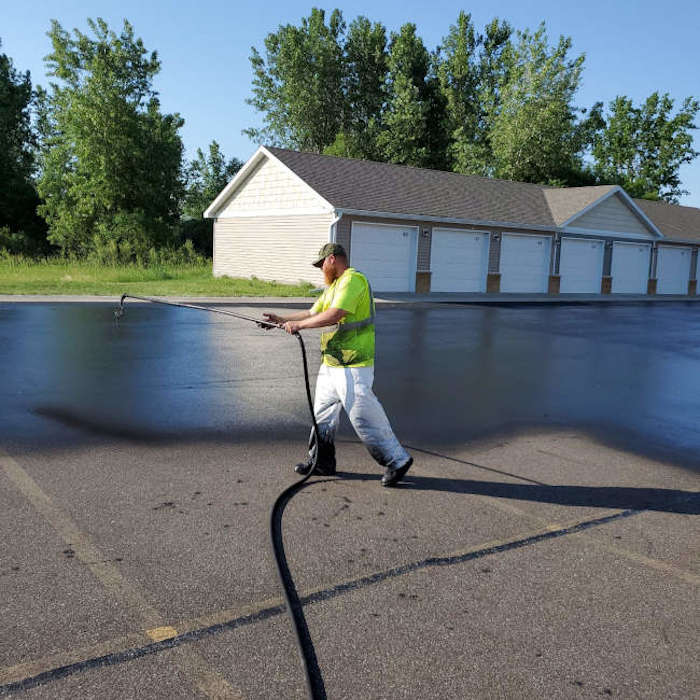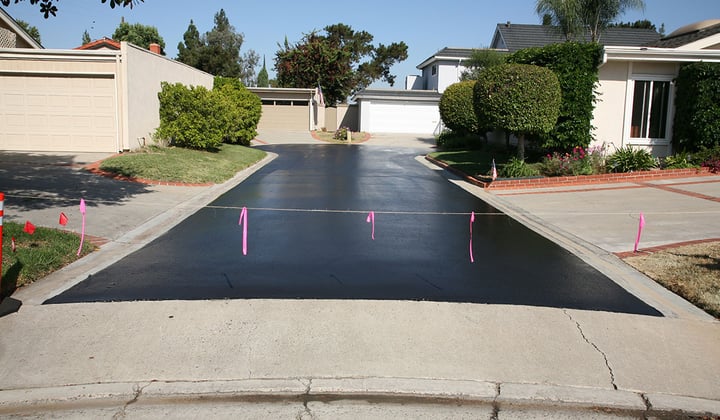Discover the Power of Business Parking Area Leading and Asphalt Sealing
Discover the Power of Business Parking Area Leading and Asphalt Sealing
Blog Article
Warm Mix Asphalt: A Sustainable Solution for Pavement
Warm Mix Asphalt (HMA) has arised as a leading sustainable selection for pavement services, offering a myriad of environmental advantages and ingenious technologies. As the need for environment-friendly building techniques grows, checking out the nuances of HMA's sustainability can supply useful insights into the future of sidewalk services.
Ecological Advantages of Warm Mix Asphalt

In Addition, Hot Mix Asphalt aids to mitigate urban warm island results. Its dark color takes in sunlight, lowering the amount of warm mirrored back into the atmosphere contrasted to lighter-colored pavements. This can reduce ambient temperature levels in urban locations, reducing the need for a/c and inevitably decreasing energy intake.
Furthermore, Hot Mix Asphalt adds to boosted stormwater administration. Its permeable nature permits water to infiltrate the pavement and charge groundwater supplies, minimizing drainage and the threat of flooding. These environmental advantages make Warm Mix Asphalt a sustainable selection for leading roads and highways.
Energy Effectiveness in HMA Production
Is power effectiveness an important aspect in the production of Warm Mix Asphalt (HMA)? Energy plays a considerable function in the manufacturing of HMA, affecting both expense and ecological sustainability. One crucial element of power effectiveness in HMA production is the usage of warm mix asphalt (WMA) technologies.
Moreover, advancements in plant innovations have actually led to even more energy-efficient HMA manufacturing processes. By enhancing power use in HMA production, the market can lower its carbon footprint while preserving high-grade pavement materials.
Recyclability of Warm Mix Asphalt
The recyclability of Warm Mix Asphalt (HMA) is a pivotal element of its sustainability and lasting ecological effect. HMA is one of the most recycled materials in the United States, with over 100 million bunches of reclaimed asphalt sidewalk (RAP) being recycled annually in new pavement building and construction. Recycling HMA uses numerous ecological advantages, such as decreasing the requirement for virgin products, lowering energy consumption during production, and lowering the amount of waste sent to garbage dumps.
The process of reusing HMA entails crushing the existing pavement, squashing it right into smaller pieces, and blending it with brand-new accumulation and asphalt binder to produce a recycled mix. Overall, the recyclability of HMA plays a significant role in advertising lasting methods within the pavement market.

Long-Term Performance of HMA
Asphalt sidewalks show durability and resilience over an extended duration, mirroring the lasting efficiency of Warm Mix Asphalt (HMA) The long life of HMA can be connected read here to its ability to stand up to hefty web traffic tons, extreme climate condition, and the impacts of aging. Research studies have shown that well-designed and correctly constructed HMA pavements can last for 20 years or more with normal upkeep. The secret to maximizing the long-lasting efficiency of HMA hinges on using top quality materials, adhering to ideal practices in building and construction, and implementing reliable maintenance strategies. Correct drainage, regular examinations, and timely repairs are essential for maintaining the architectural stability of HMA pavements over time. In addition, improvements in HMA innovation, such as making use of polymer-modified binders and cozy mix asphalt, have further improved the sturdiness and longevity of HMA pavements. By focusing on quality building and construction and maintenance techniques, HMA remains to show itself as a cost-efficient and sustainable remedy for lasting sidewalk framework.

HMA: Sturdiness and Sustainability
Demonstrating both longevity and sustainability, Warm Mix Asphalt (HMA) has ended up being a cornerstone in the building of resilient pavement facilities - commercial parking lot paving. HMA's toughness comes from its ability to hold up against heavy lots, severe climate condition, and high web traffic quantities, making it a trustworthy choice for highways, highways, and flight terminal paths. The composition of HMA, click to find out more which normally includes aggregates, binder, and filler, plays a crucial function in boosting its longevity and resistance to tear and use
Moreover, HMA's sustainability lies in its recyclability and energy-efficient manufacturing procedure. The ability to reuse recovered asphalt sidewalk (RAP) in brand-new HMA mixes minimizes the need for virgin materials and reduces the ecological impact of sidewalk building and construction and upkeep. Additionally, the energy effectiveness of generating HMA exists in its lower mixing temperatures contrasted to various other sidewalk products, resulting in minimized power intake and greenhouse gas official site exhausts.
Conclusion
Finally, hot mix asphalt (HMA) provides a sustainable service for pavement with its environmentally friendly attributes. HMA's recyclability, power effectiveness in manufacturing, and long-lasting durability make it an environmentally friendly choice for road building and construction. By preserving all-natural sources, minimizing waste, and decreasing greenhouse gas emissions, HMA plays an important function in promoting sustainability in infrastructure development. Its ability to minimize urban heat island results better emphasizes its value in producing eco mindful and resilient sidewalk systems.
HMA is one of the most recycled materials in the United States, with over 100 million lots of reclaimed asphalt sidewalk (RAP) being reused annually in brand-new pavement construction.The procedure of recycling HMA involves grating the existing pavement, squashing it into smaller sized items, and mixing it with brand-new aggregate and asphalt binder to develop a recycled mix.Asphalt pavements show toughness and resilience over a prolonged period, reflecting the long-term efficiency of Hot Mix Asphalt (HMA) Furthermore, improvements in HMA technology, such as the usage of polymer-modified binders and warm mix asphalt, have even more boosted the sturdiness and long life of HMA pavements. The capacity to reuse recovered asphalt sidewalk (RAP) in new HMA combinations decreases the need for virgin products and reduces the ecological impact of sidewalk construction and upkeep.
Report this page